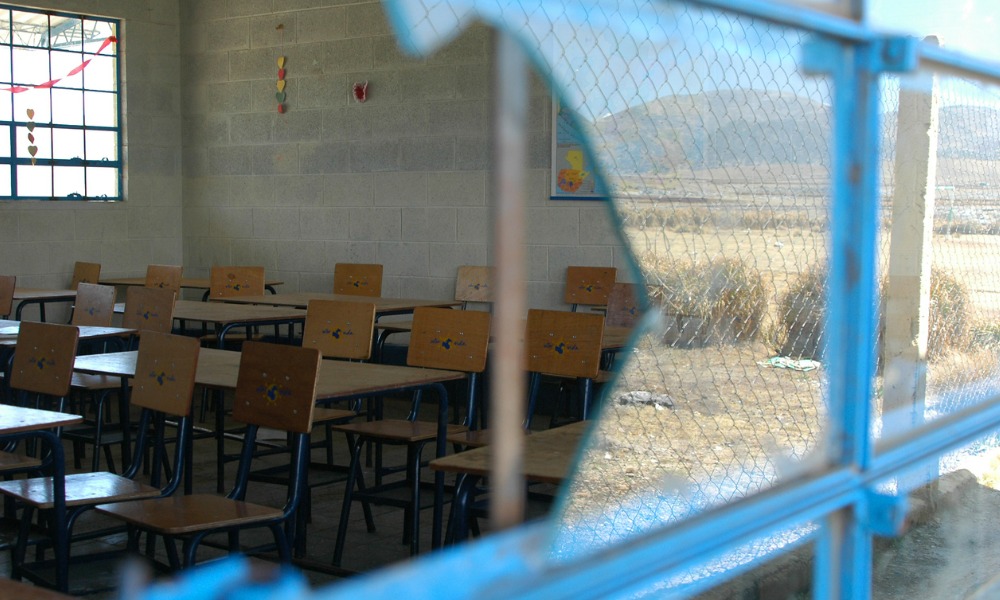Results of recent survey of teachers 'shocking and alarming'

The Elementary Teachers Federation of Ontario (ETFO), recently shared alarming insights into escalating violence within the education sector. It hired Strategic Communications Inc. to conduct an online survey of its 83,000 members in February and March. ETFO president, Karen Brown, says the results are “really quite disappointing and very shocking and alarming.”
In a recent COS Talk podcast interview, Brown, sheds light on the increasing risks faced by teachers and the urgent need for enhanced safety measures and accountability. The gravity of the situation and the necessity of addressing teacher safety for the well-being of students and educators can’t be understated, according to Brown.
Changing Risks and the Need for Accountability
"In the early 1990s, safety concerns in education were mainly related to workplace accidents, but today violence has become a prevalent issue," explains Brown. The nature of risks faced by teachers has evolved significantly, necessitating comprehensive measures to address this changing landscape. Brown emphasizes the importance of accountability in ensuring a safe learning environment. Teachers should feel secure in their workplaces, and there must be consequences for those who engage in violent behavior.
Alarming statistics and vulnerable learners
"An alarming 77% of teachers have witnessed or experienced violence in their schools," says Brown, referencing the recent ETFO survey. This statistic highlights the pervasive nature of violence in educational settings and underscores the urgent need for action. Brown is deeply concerned about the severity of violence, noting that kindergarten classrooms are seeing some of the highest rates of violent behaviour.
“You hear people say, oh, what could a student in kindergarten possibly do? And we're not in any way blaming students, for what's happening. What we are saying is that the needs of these students are going unmet.”
It is important to recognize that blaming the students themselves is not productive; rather, the focus should be on acknowledging the lack of support and resources available to meet their needs adequately, according to Brown. She says by addressing these underlying issues, we can create a safer and more conducive learning environment for all.
Escalating violence and its impact
"Violent incidents have increased by 80%” explains Brown, who says the trend began “even before the pandemic,” and paints a troubling picture of the current state of education. This escalation in violence is a cause for alarm, demanding immediate action.
Brown draws attention to the detrimental impact of violence on the educational environment, pointing out that "35% of teachers have had to evacuate their classrooms due to compromised safety." The disruption caused by violent incidents not only interrupts learning but also creates an atmosphere of fear and insecurity for both teachers and students.
Accountability and support
"Understanding the underlying causes of student violence is crucial," asserts Brown. It is essential to delve deeper into the root causes of violent behavior to effectively address and prevent it. Brown stresses the need to assess support systems and resources available to students, such as child and youth care workers and special education services.
Brown believes by ensuring students receive the support they require, the potential for violence in schools can be mitigated. However, Brown has been disappointed in the response from administrators, like principals and school board officials, stating that many incidents go unreported due to a lack of confidence in effective measures being taken. It is imperative that administrators listen to the concerns of teachers, provide a safe space for reporting incidents, and take decisive action to rectify the situation.
Employer responsibility and systemic issues
"Employers must prioritize teacher safety as per the Occupational Health and Safety Act," Brown emphasizes. The responsibility lies not only with the teachers themselves but also with the employers and institutions that employ them.
It is crucial for employers to provide a safe working environment and to ensure that teachers receive adequate training on de-escalation techniques and conflict resolution. Brown calls for stronger action from employers and highlights the systemic issues of underfunding and limited resources that exacerbate the challenges faced by teachers and students alike.
There is a pressing need to address violence in the education sector and ensure teacher safety. The statistics and insights from the ETFO survey shine a bright light on the pervasive nature of violence in schools and its detrimental impact on both teachers and students.
Greater accountability, support, and resources are needed, according to Brown, to curb violence directed at teachers. It is imperative policymakers, administrators, and stakeholders take immediate action to mitigate violence and promote the well-being of teachers and students. By prioritizing teacher safety and addressing systemic issues, we can work towards a future where education is free from violence and conducive to the holistic development of children.





